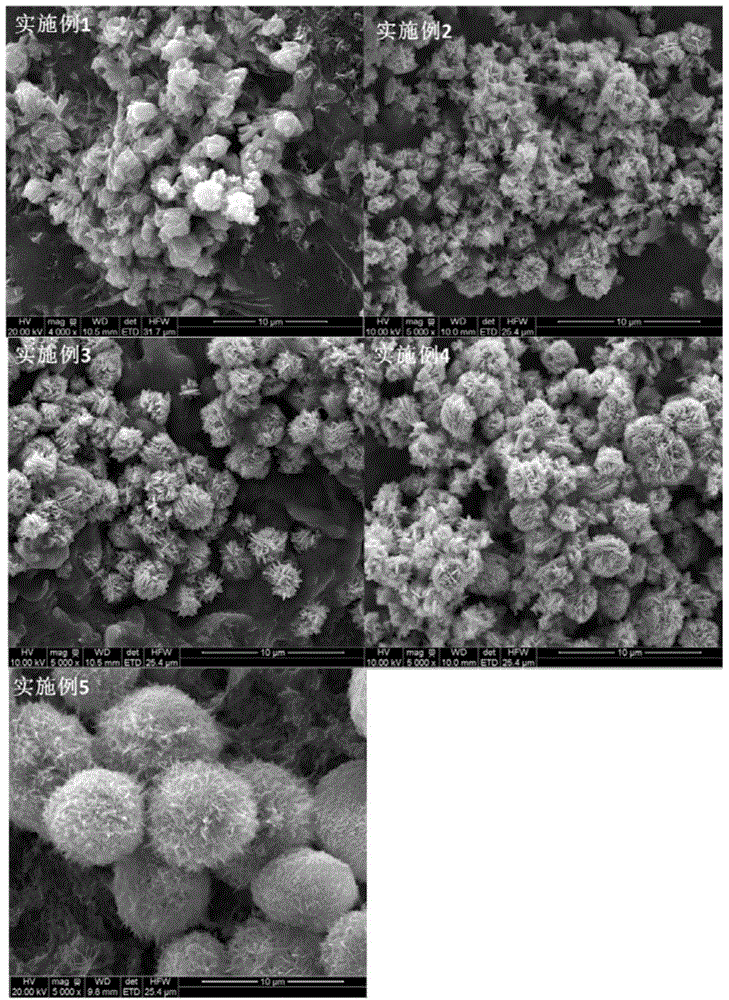Cellulose/nano zinc oxide composite material and preparation method and application thereof
A technology of nano-zinc oxide and composite materials, applied in the photocatalytic degradation of organic pollutants, in the field of cellulose/nano-zinc oxide composite materials and its preparation, can solve surface enrichment, nano-zinc oxide irregular morphology, Problems such as large amount of zinc oxide composite material added
- Summary
- Abstract
- Description
- Claims
- Application Information
AI Technical Summary
Problems solved by technology
Method used
Image
Examples
preparation example Construction
[0099] The preparation method of composite material of the present invention comprises the steps:
[0100] 1) providing a cellulose sol film;
[0101] 2) The cellulose sol film is placed in a zinc salt solution, and the zinc salt solution soaked in the cellulose sol film is heated to obtain the cellulose / nanometer zinc oxide composite material of the present invention.
[0102] Wherein, the cellulose sol film is prepared as follows:
[0103] a) providing a cellulose solution;
[0104] b) coating the defoamed cellulose solution on a slide to obtain the cellulose sol film.
[0105] Specifically, the solvent of the cellulose solution is a mixed solution of sodium hydroxide, urea and water.
[0106] In a preferred example, the mass ratio of sodium hydroxide: urea: water in the solvent is 5-10: 10-15: 70-90.
[0107] Typically, the mass ratio of sodium hydroxide in the solvent: urea is 5-10:10-15.
[0108] Specifically, based on the total weight of the cellulose solution, the ...
Embodiment 1
[0133] Example 1 Composite material 1
[0134] Use cellulose powder with an average particle size of 50 μm
[0135] Step 1: Prepare the cellulose dissolving solution according to sodium hydroxide: urea: water = 7:12:81 (wt%), and put it into the refrigerator to pre-cool to -5-15°C. Add 8wt% cellulose to the pre-cooled dissolving solution, and stir for 3 minutes at a temperature lower than 5° C. to obtain a uniform and transparent cellulose solution.
[0136] Step 2: Centrifuge and degas the cellulose solution obtained in Step 1, apply a film on a glass slide, and let it stand for 10 minutes.
[0137] Step 3: Immerse the product obtained in Step 2 at room temperature in a 3.5 mM zinc chloride solution and let it stand for 10 hours to form a reverse-phase film of cellulose and nucleate zinc oxide.
[0138] Step 4: wash the resultant of step 3 with deionized water 3-5 times, and air-dry at room temperature to obtain composite material 1
[0139] result
[0140] The surface mo...
Embodiment 2
[0142] Example 2 Composite material 2
[0143] Use cellulose powder with an average particle size of 50 μm
[0144] Step 1: Prepare the cellulose dissolving solution according to sodium hydroxide: urea: water = 7:12:81 (wt%), and put it into the refrigerator to pre-cool to -5-15°C. Add 8wt% cellulose to the pre-cooled dissolving solution, and stir for 3 minutes at a temperature lower than 5° C. to obtain a uniform and transparent cellulose solution.
[0145] Step 2: Centrifuge and degas the cellulose solution obtained in Step 1, apply a film on a glass slide, and let it stand for 10 minutes.
[0146] Step 3: Immerse the product obtained in Step 2 at room temperature in a 3.5 mM zinc chloride solution and let it stand for 10 hours to form a reverse-phase film of cellulose and nucleate zinc oxide.
[0147] Step 4: The product obtained in step 3 was heated at 80° C. for 4 hours, and zinc oxide nanoparticles with a hierarchical structure were grown in situ on the surface of the ...
PUM
| Property | Measurement | Unit |
|---|---|---|
| particle size | aaaaa | aaaaa |
Abstract
Description
Claims
Application Information
 Login to View More
Login to View More - R&D
- Intellectual Property
- Life Sciences
- Materials
- Tech Scout
- Unparalleled Data Quality
- Higher Quality Content
- 60% Fewer Hallucinations
Browse by: Latest US Patents, China's latest patents, Technical Efficacy Thesaurus, Application Domain, Technology Topic, Popular Technical Reports.
© 2025 PatSnap. All rights reserved.Legal|Privacy policy|Modern Slavery Act Transparency Statement|Sitemap|About US| Contact US: help@patsnap.com



